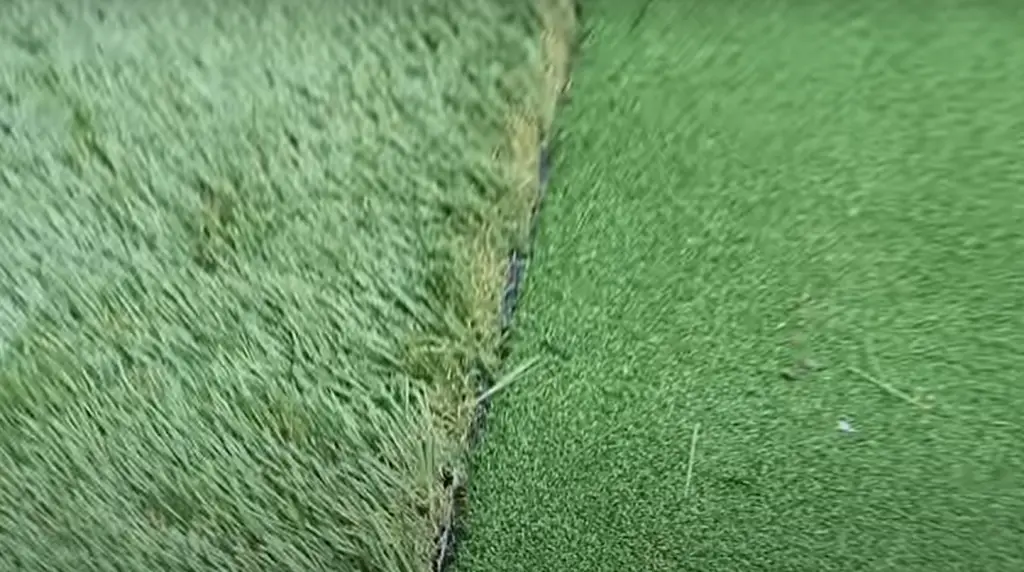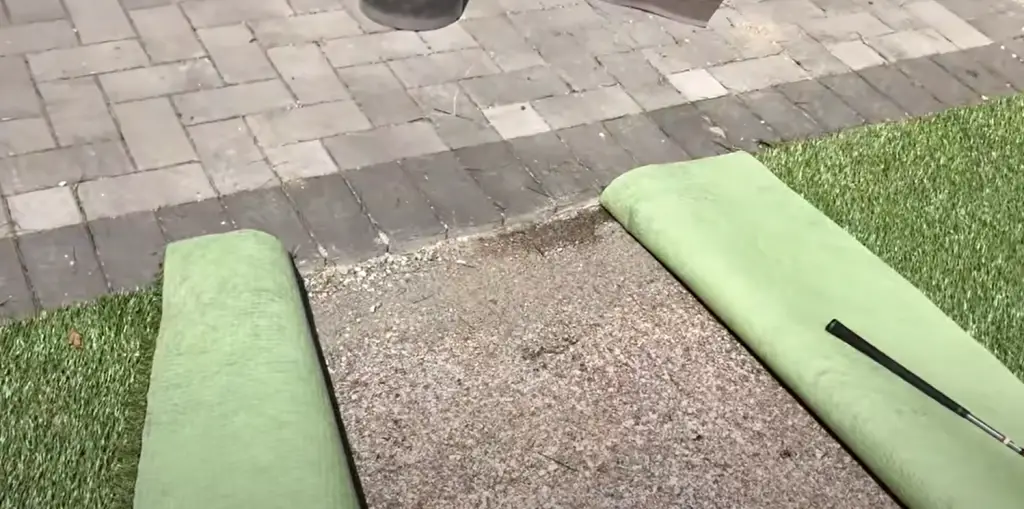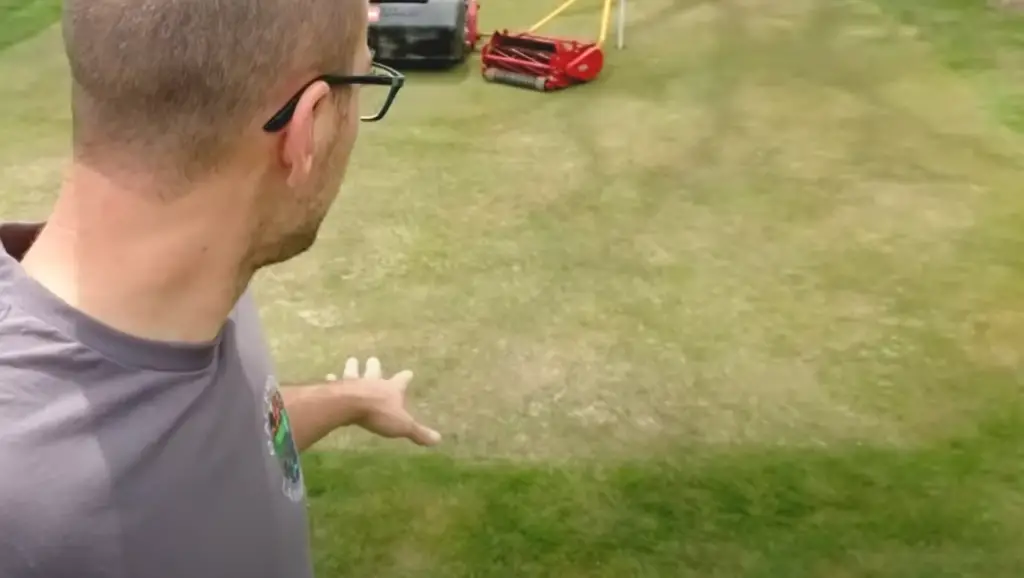Do you love golf, but don’t have enough time to get out to the course? Do you live in an area where the winters are too cold to play outdoors? Or maybe you’re just looking for a new hobby that can give you some competitive edge against your friends.
If any of these scenarios apply to you, then building your own backyard putting green may be the perfect solution! In this comprehensive guide, we will answer all of your questions about putting greens and provide helpful tips on how to choose and use the right products. Let’s get started!
How to Build a Backyard Putting Green?
Choose the Site
The first step is to choose the site for your green.
If you have a spot that stays wet after a rain, it’s not ideal. You also want to make sure the ground is level. If you have a slight slope, that’s okay, but anything more than that will make it difficult to get the ball to roll true.
Once you’ve found the perfect spot, it’s time to start preparing the ground. If you have grass, you’ll need to remove it. The best way to do this is with a sod cutter. You can rent one from your local home improvement store.
Preparing the Site
The first step is to clear the area where you want your putting green. This means removing any grass, weeds, or other vegetation. You’ll also need to level the ground as much as possible. Once you’ve done this, you can lay down a layer of landscape fabric to help prevent future weed growth.
Next, you’ll need to add a base layer of gravel. This will help with drainage and ensure that your putting green has a flat surface. Once the gravel is in place, you can add a layer of sand. This will be the foundation for your putting green’s turf. [1]
Start Digging
The first step is to start digging the area where you want your green. You will need to make sure that the area is level so that your green will have a consistent surface. You can use a shovel or an excavator to dig out the area. The depth of the hole will depend on how deeply you want the roots of your grass to be planted.
You will need to water your grass regularly after you plant it. This will help the roots grow deep and strong. You should also fertilize your grass once a month to keep it healthy and green.
Add Some Contour
The next step is to add contour to your green. This can be done with a garden hose or string. Begin by marking out the high and low points of your green. For example, if you want a hole in one section, make that area the lowest point on the green.
Then, use the hose or string to mark out the contour lines. These can be as simple or complicated as you want. [2]
Install Proper Drainage
The first step in building your own backyard putting green is to install proper drainage. This will ensure that water does not pool on your green and damage the grass. You can do this by installing a French drain or a catch basin.

Once you have installed proper drainage, you will need to level the area where your green will be. You can do this by using a laser level or a string line. [2]
Cap it with Sand
If you’re going to build a backyard putting green, one of the most important things is the sand. You’ll need enough sand to cover the entire green, and it should be at least two inches deep. The type of sand you choose is also important. Builder’s sand or play sand are both good options.
Once you have the sand, you need to compact it. You can do this with a hand tamper or a power tamper. Make sure the sand is evenly compacted across the entire green.
Seed it or Sod It
There has been a debate about seed or sod for a while.
If you want to plant grass seeds, there are a few things you need to do first.
- First, make sure the area is free of any rocks, sticks, or weeds.
- Next, till the soil so it is loose and easy for the seeds to take root.
- Once the soil is ready, spread the seeds evenly and then water them regularly until they germinate.
The Final Touches
Now that you have all of the necessary materials and equipment, it’s time to get started on your backyard putting green! Here are a few final tips to keep in mind as you begin:
- Start by taking the area where you’ll be laying the turf. This will help ensure an even surface.
- When installing the turf, be sure to roll it out in the opposite direction of the grain. This will help prevent the turf from buckling or wrinkling over time.
- Use a sharp knife to cut the turf around any obstacles in your yard, such as trees or flower beds.
- To secure the turf, use either nails or landscape staples. Be sure to space the nails or staples about 12 inches apart.
- Once the turf is in place, brush it with a stiff broom to help stand the blades up.

Now you’re ready to start enjoying your new backyard putting green!
Maintenance Tips
To keep your backyard putting green in top condition, it’s important to perform regular maintenance. Here are a few tips to help you keep your green looking great:
- Be sure to regularly sweep the green with a soft broom to remove any debris or dirt.
- If there are any bare spots on the green, simply add more turf seed to those areas and brush it in.
- It’s also a good idea to fertilize your green every few months. This will help ensure a healthy lawn.
- Finally, be sure to water your green regularly, especially during hot summer months. A sprinkler system can be a great way to keep your green properly hydrated.
By following these simple tips, you’ll be able to enjoy your backyard putting green for many years to come.
Suggested Tools and Materials
- Shovel
- Wheelbarrow
- Rake
- Tamp
- Laser level or string level
- Measuring tape
- Marking paint or chalk
- Landscape fabric or geotextile membrane (optional)
- Golf course sand or silica sand
- Putting green turf
- Edging (optional)
- Infill (optional
FAQ
What is the Best Way to Build a Putting Green in Your Backyard?
Building a backyard putting green is a great way to improve your golf game and have some fun. But where do you start?

Here are a few things to consider when planning your backyard putting green:
- The size of your green will depend on the available space in your yard and the amount of traffic it will get. If you have a small yard, you might want to consider a smaller green.
- The type of grass you choose is important. You’ll want to choose a grass that is drought tolerant and can stand up to heavy foot traffic. Bermuda grass is a good option for a backyard putting green.
- The slope of your green is important for drainage and playability. You’ll want to make sure the green slopes away from your house and have good drainage.
- You’ll need to fertilize and water your green regularly to keep it healthy. Be sure to choose a fertilizer that is safe for use around children and pets.
With a little planning and effort, you can have a beautiful and functional backyard putting green that the whole family will enjoy.
How Do You Prepare the Ground for an Artificial Putting Green?
The first step is to remove any existing grass and level the ground. You’ll then need to install a sub-base, which can be made of sand or gravel. Once the sub-base is in place, you can install the artificial turf. Finally, you’ll need to add infill, which helps to protect the turf and keep it looking fresh.
How Do You Make an Outdoor Putting Green?
Building an outdoor putting green is a great way to improve your game and have some fun in the process. But before you start, there are a few things you need to consider.
Choosing the right location for your backyard putting green is important. You’ll want to pick a spot that is level and has good drainage. If you have a sloped yard, you can use artificial turf to create a level surface. You’ll also need to make sure there is enough space for the green and for you to swing your clubs.
Once you’ve selected the perfect spot, it’s time to start preparing the area. You’ll need to remove any existing grass or vegetation, as well as any rocks or roots that might be in the way. You’ll also need to create a border for the green.
What is the Best Base for a Putting Green?
The best base for a putting green is one that is level and well-drained. You will also want to make sure that the area you choose is large enough to accommodate the size of green you desire. Once you have found the perfect spot, it’s time to start preparing the ground.
The first step is to remove any grass or plants. You can do this with a sod cutter, chemical herbicide, or by hand. Next, you will need to level the area. You can do this with a shovel and rake or you can use a power tiller. Once the area is level, you will want to add a layer of topsoil. This will help make your putting green have a smooth surface.
Once the topsoil is in place, you will need to add a layer of sand. The type of sand you choose is important because it can affect how well your lawn drains. Make sure to use a course sand that is designed for drainage.
After the sand is in place, add a layer of grass seed. You can choose any type of grass seed that you like, but it’s important to make sure that the seed you choose is compatible with the type of soil and climate in your area.
You will need to water the grass seed regularly after you add it. You will also need to fertilize the grass seed according to the manufacturer’s instructions. Once the grass has grown to the desired height, you will need to cut it. It is important to make sure that you use a sharp mower blade so that you do not damage the grass.
Once you have cut the grass, you will need to add a layer of mulch. This will help protect the grass and keep it looking nice. Once the mulch is in place, you can start using your new putting green.
What Do You Put Under the Green?
The most popular option is to use artificial turf. This will give you a consistent surface to hit your ball from, and it will also protect your green from any wear and tear.

Another option for your yard is to use a real grass backing. This is a more natural option, but it can be more difficult to keep in good condition. If you choose this option, make sure to pick a grass that is resistant to wear and tear.
You can also use a combination of both artificial turf and real grass. This is a good option if you want the best of both worlds.
No matter what you choose for your backing, make sure to install a drainage system. This will help to keep your green from flooding in heavy rains.
What Kind of Grass Do You Use for Putting Green?
There are several different types of grass that can be used for a backyard putting green, but the most common is Bermuda grass. Other popular choices include bentgrass and zoysia grass.
It’s important to consider your climate and the amount of sunlight that your green will get. Bermuda grass, for example, thrives in warm climates with plenty of sunlight.
If you’re not sure which type of grass is best for your putting green, consult with a local landscaper or turfgrass expert. They’ll be able to recommend the best type of grass for your specific climate and situation.
Once you’ve chosen the type of grass for your green, it’s time to start planning the layout. The size and shape of your green will depend on the amount of space you have available in your yard.
If you have a small yard, you might want to consider building a rectangular or square green. If you have a larger yard, you could build a more complex green with multiple levels or slopes.
Do You Nail Down Putting Green?
You don’t have to “nail down” your putting green. This is a common misconception. People think that because they are using artificial turf, they need to adhere it or glue it down to their sub base in some way.
This is simply not true! The interlocking tiles are designed to stay in place without any adhesive. In fact, using an adhesive can actually damage the tiles and void the warranty.
Can You Put Green On Concrete?
Yes. However, it is important to note that the results may not be as good as if you were to install the green on grass or another softer surface. Additionally, you will need to take extra care when installing the green on concrete so that it doesn’t crack or chip. If you’re unsure about whether or not you can install a putting green on your concrete patio, it’s best to consult with a professional.
How Do You Build an Indoor Putting Green?
Building an indoor putting green is similar to building an outdoor one, but there are a few key differences.
- First, you’ll need to make sure that the area you’re working in is well-ventilated so that the fumes from the artificial turf don’t build up and cause problems.
- Second, you’ll need to use a different type of adhesive when attaching the turf to the floor since indoor floors are usually made of wood or tile.
- Finally, you’ll need to take extra care when cutting the turf so that you don’t damage the floor. If you’re not sure how to build an indoor putting green, it’s best to consult with a professional.
Useful Video: How to Build the PERFECT Home Putting Green – Behind the Scenes Tour
Conclusion
Adding a backyard putting green is a great way to improve your home and your golf game. If you’re thinking about installing one, follow these tips to make sure it turns out the way you want it to.
The first step is to choose the right location for your putting green. You want an area that gets plenty of sunlight and has good drainage. Next, mark out the size of your green using spray paint or stakes and rope. Then, use sod or artificial turf to create your surface. Finally, add some finishing touches like sand traps and flagpoles, and you’re ready to go!
Have you installed a backyard putting green? Share your experience in the comments below.
References:
- https://pluggedingolf.com/how-to-build-a-backyard-putting-green/
- https://golf.com/lifestyle/how-to-make-your-own-backyard-putting-green/










Leave a Reply
View Comments